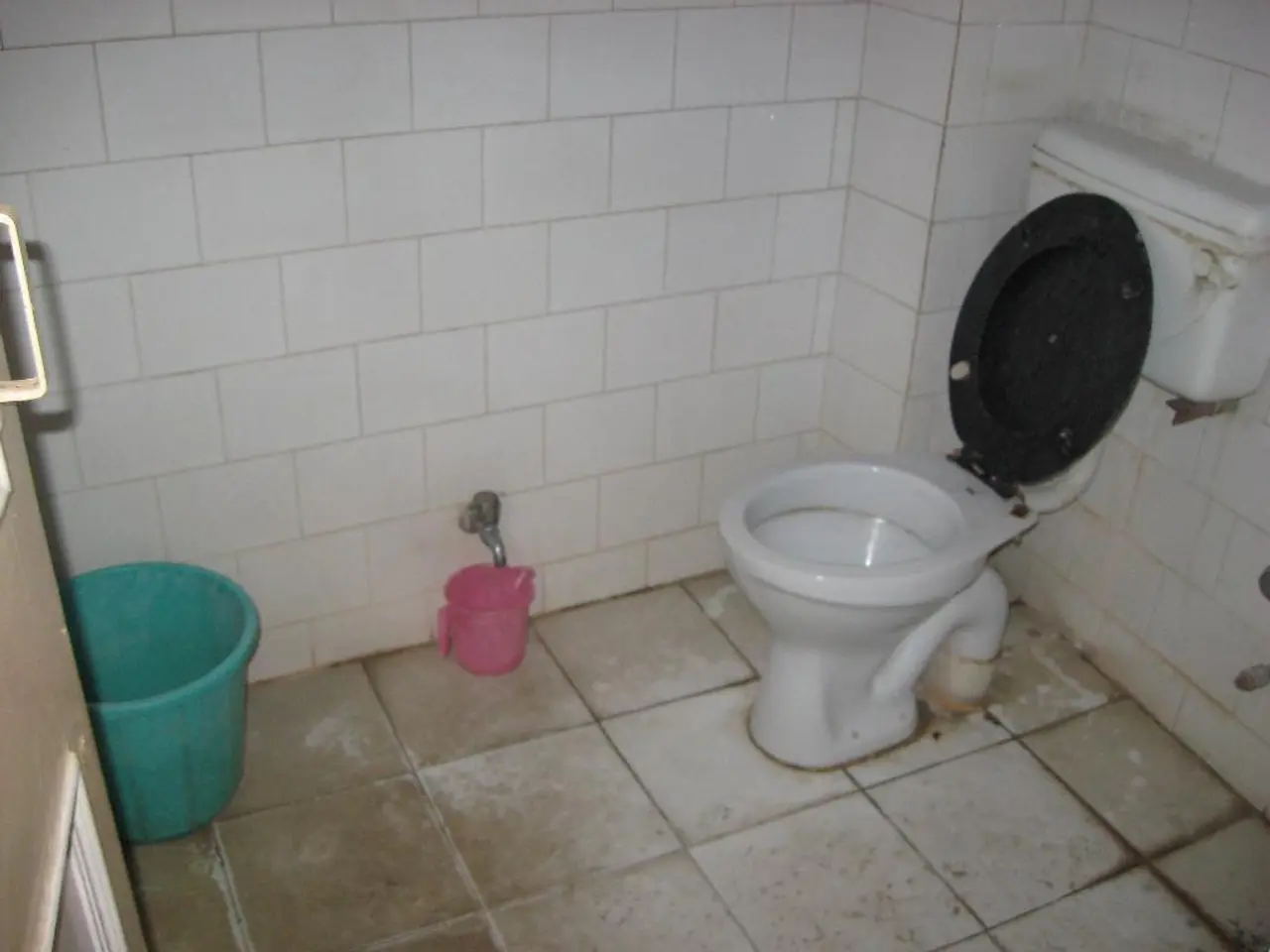Troubleshooting Persistent Toilet Flushing - Discovering Potential Causes and Solutions
A running toilet can be a nuisance and a drain on your water bills. But fear not, for this issue is often a simple fix that you can tackle yourself. Here's a comprehensive guide on how to diagnose and repair a running toilet, complete with recommended tools and expert advice.
Common Causes and How to Fix Them
1. Worn or Faulty Flapper Valve (most common cause)
The flapper, a rubber valve at the bottom of the tank, opens to let water flush and then seals the tank. Over time, it can warp, crack, or become misaligned, causing continuous water leakage into the bowl.
Steps to fix:
- Turn off the water supply valve at the base of the toilet.
- Remove the tank lid, flush to empty most water.
- Detach the flapper from the chain and hinges.
- Inspect for damage; if damaged, replace with a matching flapper from a hardware store.
- Reattach the new flapper, turn water back on, and test flush.
Tools: Adjustable wrench (to turn water valve), screwdriver or pliers (if needed to detach parts), replacement flapper.
2. Faulty Fill Valve
The fill valve refills the tank after flushing and controls water level. If it malfunctions, water may overfill and leak from the overflow tube.
Steps to fix:
- Turn off water supply.
- Remove the tank lid.
- Adjust the fill valve float to lower the water level below the overflow tube.
- If adjusting doesn’t help, replace the fill valve with a universal kit.
- Turn water on and test.
Tools: Adjustable wrench, pliers, fill valve replacement kit (sometimes included in universal toilet repair kits).
3. Leaks Between Tank and Bowl or Around Base
Could be due to worn gaskets or loose bolts. Leaks at base usually signify worn wax ring needing replacement.
Steps:
- For tank-to-bowl leaks:
- Turn off water and disconnect supply line.
- Remove tank bolts with wrench.
- Separate tank and bowl.
- Replace large gasket and gasket around bolts.
- Reassemble and test.
- For base leaks:
- Turn off water and disconnect supply line.
- Remove toilet bolts and lift toilet off flange.
- Remove old wax ring and clean flange and toilet base.
- Install new wax ring.
- Lower toilet onto ring evenly and tighten bolts carefully.
Tools: Adjustable wrench, pliers, screwdriver, putty knife or scraper (for old wax ring), new gaskets and wax ring.
4. For Dual Flush or Modern Toilets
May require replacing special valve kits specific to the model. Some universal 3" dual flush valve kits can be installed without a plumber.
Steps:
- Turn off water and empty tank.
- Remove old flush valve.
- Install new universal valve kit following included instructions.
- Reconnect water and test operation.
Tools: Wrench or pliers, towels to catch water drips.
Summary of Recommended Tools
- Adjustable wrench (to turn off water valve, loosen bolts)
- Pliers or channel locks
- Screwdriver (varies by toilet)
- Putty knife or scraper (for wax ring removal)
- Replacement parts: flapper valve, fill valve, wax ring, tank-to-bowl gasket, or universal flush valve kit
- Towels or sponge (to soak up water during repair)
By carefully diagnosing the cause (flapper, fill valve, gaskets, or seals) and following the respective repair steps, you can fix most common running toilet problems yourself using basic tools and parts available at hardware stores. For more expert advice on how to fix the problem and when it's time to replace a faulty valve, consult professionals like Alex Woods, a bathroom expert, or David Cruz, a plumbing expert.
- The running toilet issue in your home is often a result of a worn or faulty flapper valve, which can be found at the bottom of the tank and seals the tank after flushing.
- To fix this common problem, you'll need to replace the worn flapper with a new one obtained from a hardware store, using tools such as an adjustable wrench and screwdriver or pliers.
- Another potential cause of a running toilet could be a faulty fill valve, which controls the water level in the tank after flushing.
- When repairing the fill valve, you may need tools like an adjustable wrench and pliers, along with a fill valve replacement kit that can be purchased from a home-and-garden store.
- Sometimes, the issue might lie in leaks between the tank and bowl or around the base of the toilet, which can be fixed by replacing large gaskets, wax rings, and bolts using various tools available in your toolkit.




